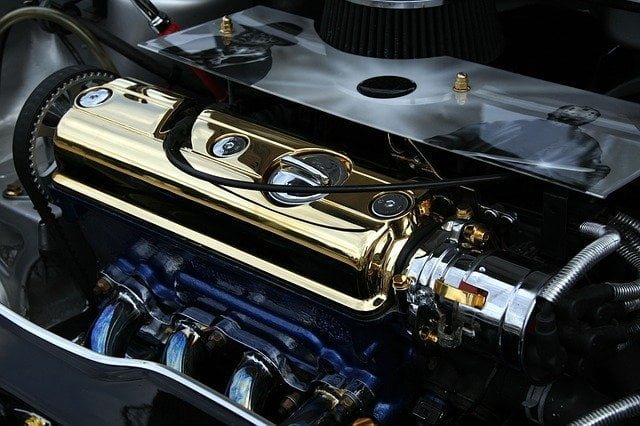
6 different types of car engines
6 different types of car engines
The engine is the soul and heart of your car simply because it is the most important part of a car. It acts as the main source of energy and converts the energy into mechanical motion.
It is undeniable that car designs and models have evolved greatly over the past few years and it is interesting that automobile engines have taken the same approach.
Engines have an interesting history, and if you are planning to buy a car soon, understanding the different types of automobile engines will help you make the best choice.
People differ, while some prefer fuel-efficient engines, others focus on more power.
With this in mind, car manufacturers are working hard day and night to meet the needs of all customers and therefore, they have created different types of car engines and here are some of them.
Engine types
In general, there are two types of engines, namely, internal and external combustion engines.
1. Internal combustion engines
In these engines, the fuel is combusted inside the engine which leads to an increase in pressure and an increase in temperature.
As a result of combustion, the resulting high pressure is applied to the rotor, pistons or nozzle and is the same force that moves your vehicle from one place to another and converts chemical energy into useful mechanical energy.
Two-stroke and four-stroke gasoline and diesel engines are excellent examples
2. External combustion engine
In these engines, the fuel is combusted outside the engine and the steam engine is a great example
For your peace of mind, there are different types of internal combustion engine (ICE) which are categorized according to different rules and we will examine them below;
1. Based on design
a. reciprocating motor
The piston and cylinder are the two main components of a reciprocating engine. An engine may have one or more pistons, the main purpose of which is to convert pressure into rotating motion.
Each piston is placed inside the cylinder, and as a result of gas combustion, the piston begins to move back and forth (reciprocating motion) which is then converted into rotational motion.
B. Wankel engine
Also known as a rotary actuator, the Wankel motor converts pressure into rotating motion using an eccentric rotor system.
When compared to a reciprocating motor, the Wankel motor is smoother, simpler, and more compact.
Note that these engines typically produce more power pulses per revolution, and therefore, they are mostly used in racing cars, Mazda’s RX-8 being a very popular example.
2. Based on the ignition method
a. compression ignition engine
These types of engines do not have a spark plug in the cylinder head, so the heat of the compressed air is responsible for the ignition of the fuel.
An excellent example of a compression ignition engine is the diesel engine because it works only by compressing air.
Some of the advantages of a compression ignition engine are reduced parasitic load and increased thermodynamic efficiency.
B. spark ignition engine
These engines are constructed with spark plugs installed in the engine head, which produce a spark after compressing the fuel to ignite the air-fuel mixture for the combustion process.
According to experts, gasoline engines rely on spark ignition but can only run on bio-ethanol, methanol, hydrogen, compressed natural gas (CNG), liquefied petroleum gas (LPG) and nitromethane.
3. Based on the number of cylinders
a. single cylinder engine
It consists of a single cylinder connected to the crankshaft. These types of engines are lightweight, compact and have a distinct weight compared to the power ratio.
They are commonly used on scooters, motorcycles, go-karts, and dirt bikes.
B. double cylinder engine
These engines consist of two cylinders, hence the name of the twin cylinder engine.
c. multi-cylinder engine
These engines have more than two cylinders and can be three, four, six, twelve or sixteen. These engines have excellent ability to neutralize imbalances and effortlessly achieve higher revolutions per minute (RPM).
A good example is a two-stroke and four-stroke engine and can be a diesel or spark ignition engine.
4. Based on cylinder arrangement
a. vertical drive
Just like the name, vertical engine cylinders are arranged vertically.
B. horizontal drive
The cylinders of these engines are arranged horizontally
c. V . engine
In these types of engines, the pistons and cylinders are aligned in two banks with some angles between them and when viewed from above, they resemble a “V” shape .
According to experts, the unique look that comes with these motors is to prevent vibration and balance issues.
Dr.. W type engine
In these engines, the cylinders are arranged in 3 rows to form a “W” shape , in most cases this engine is made due to the production of 16 cylinder and 12 cylinder engines.
H. inverted cylinder engine
The cylinders in this type of engine are placed in opposite directions. Most importantly, this engine has excellent balance and runs smoothly simply because both the piston and connecting rod operate identically.
5. Types of fuel used
- Gasoline engine – uses gasoline as the main source of energy
- Diesel Engine – It uses diesel for its work
- Gas engine – uses fuel to do its job
6. Based on the number of strokes
a. two-stroke engine
In this type of engine, the piston makes a motion twice, up (from BDC to TDC) and down (from TDC to BDC), to produce an electric stroke.
B. Four stroke engine
In this type of engine, the piston moves four times, two up and two down motions in one revolution of the power stroke.
c. Six-stroke engine
The six-stroke engine is still in the development stage, but according to sources, it will spark interest and interest in the automotive industry.
It is expected to bring enormous benefits such as reduced mechanical complexity, increased fuel efficiency and reduced emissions.
minimum
The engine is the most important part of your car because it allows you to move efficiently from one place to another.
Turning a key to start your car is always exciting and straightforward, and in most cases, its simplicity makes people take the engine for granted.
If you want to understand the engineering behind your car, it is a good idea to understand the technology that takes place under the hood and, most importantly, understand the different types of car engines available.
It is advisable to understand the different engines of cars and how they work and make an informed decision about what to buy based on your personal preferences.



